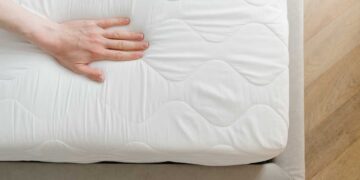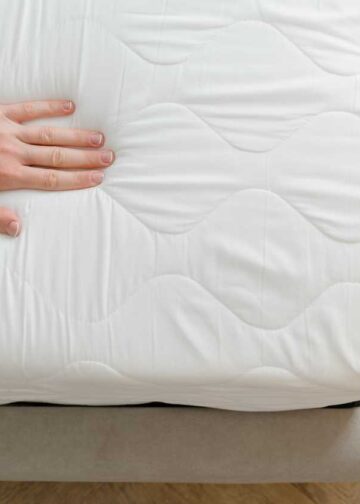The primary annoyance occurs when an air mattress loses its air. An inflatable air mattress offers optimal comfort for your leisure, yet its deflation during usage proves extremely unpleasant. Multiple factors could cause this to happen, even with a high-quality air mattress. Occasional deflation might result from its structure, ambient temperature, or weight capacity.
4 Reasons Air Mattresses Deflate Overnight
Trying to pinpoint the exact reasons my air mattress keeps deflating:
- Misuse of the air mattress.
- Physical damage. Environmental temperature issues.
- Overinflation.
- Capacity limits of the air mattress.
Misuse
Correct usage of an air mattress is crucial. Every air mattress comes with detailed usage instructions. Ignoring these guidelines usually leads to deflation issues.
If an air mattress is not stored correctly, the valve might weaken over time, leading to tiny ruptures through which air can escape more easily. It’s vital to adhere to the provided instructions as it aids in maintaining proper air pressure and enhancing the lifespan of your mattress. Take additional precautions during camping and select the appropriate air mattress.
Physical Damage
Since air mattresses are often crafted from delicate materials, frequent usage may inflict physical damage. An air mattress isn’t the most robust item; hence, it can easily become punctured and torn with regular use.
Less expensive air mattresses usually aren’t built for sustained, daily use. Positioning them directly on rough, jagged surfaces isn’t advisable, and leaks occurring within months lead to quick deflation. Detecting a puncture can also be challenging, so it’s crucial to stay vigilant about potential physical damage to your air mattress.
Temperature
Air mattress deflation is significantly influenced by the ambient temperature. The solidity of the mattress adjusts with notable shifts in temperature. In warmer conditions, the mattress typically enlarges and conversely shrinks in colder conditions due to the expansion and contraction properties. Thus, maintaining a moderate room temperature is essential to prevent air loss from your mattress. A steady room temperature aids in averting deflation, so consider keeping a heater in the room but ensure it’s positioned away from your bed.
Overinflation
Excessive inflation can predispose your mattress to future damage, so avoid overfilling it. Inflate only when necessary and deflate for storage. Beware of the pump’s excessive pressure during inflation as it might strain the seal and lead to minor leaks.
The connection stressed by the pump can cause a small air escape, eventually leading to a significant leak, explaining why the air mattress begins to deflate.
Weight Capacity
Every air mattress is designed with a specific weight capacity. Surpassing these limits invariably leads to air loss.
Each mattress bears a label indicating its maximum weight limit; exceeding this can cause rapid deflation. Manufacturers provide these details, and you should contact them if unclear. Weight limitations apply not only for lying down but also when sitting; for instance, if a mattress rated for 225 lbs begins leaking with two individuals of 210 lbs each sitting on it.
Short Solution: Ways to Prevent Deflation
An air mattress deflates often due to improper handling. Here are several tips to prevent deflation:
- Fold it meticulously.
- Control ambient temperature.
- Use the mattress judiciously.
- Place it flat.
- Always secure the valve tightly.
- Avoid any physical damage.
- Adhere to specified weight limits.
- Deflate when not deployed.
- Keep the vicinity clean from sharp objects.
- Avoid concentrating high pressure in small areas, no jumping.
- Occasionally using a space heater might also help in preventing the mattress from deflating.
Adhering to these practices will assist in maintaining the integrity of your mattress.
- “Sleep Like Royalty: Discover the Lucid 12″ Cal King Mattress!” - February 14, 2024
- “Is Your Mattress Past Its Prime? Find Out Now!” - February 11, 2024
- Sleep Better Every Season: Seasonal Sleep Tips - January 26, 2024









